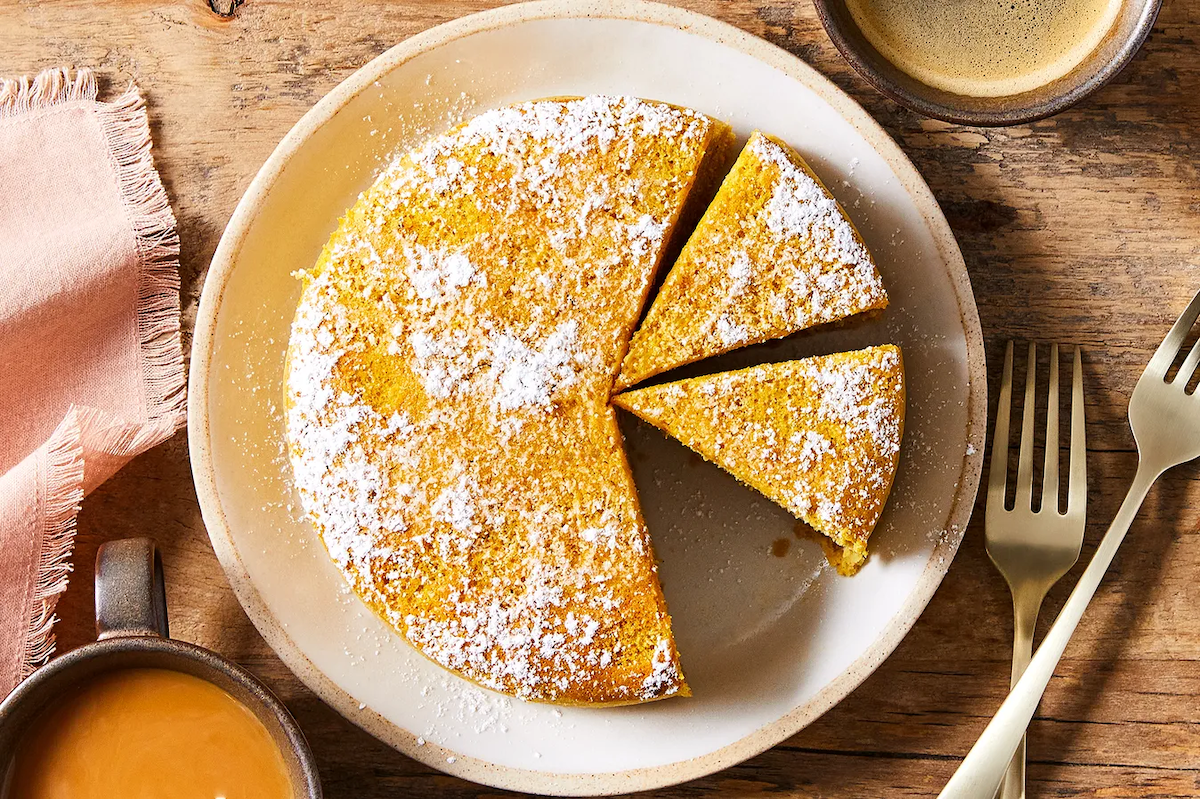There's something soothing about following directions for baked goods, knowing that the final product will turn out just right if you abide by the precise measurements. I love to bake everything from elaborate birthday cakes to buttery biscuits to fudgy brownies, but sometimes I get a little lazy when it comes to using the appropriate ingredients (who doesn't?). For example, when I see that a recipe calls for cake flour instead of all-purpose flour, I tend to turn my cheek and proceed with all-purpose, not wanting to make a last-minute run to the store. While the swap turns out okay, the final product is never quite as fluffy and light as it should be.
I did some digging to find out: is it really worth buying cake flour in addition to AP flour? What makes cake flour necessary for certain baked goods? And what's the difference between all-purpose flour and cake flour, anyway?
What Is Cake Flour?
Cake flour is made by milling soft wheat (aka wheat that's low in gluten, though not gluten-free) and sifting it until extra fine in texture. The fineness yields tender baked goods with a moist, airy crumb—perfect for delicate sponges and pillowy cookies, like snickerdoodles. Soft white wheat and soft red winter wheat are used in the production of cake flour due to their low levels of protein, which hover around 8.5 percent to 10.5 percent. Both grains are short and plump, and grind more easily than their hard wheat counterparts.
Another name for the protein content of flour is gluten, which acts as a binding agent, developing structure and holding the ingredients together. Each type of flour contains a different amount of gluten, which has a noticeable effect on the final result. In the case of cake flour, the minimal gluten allows baked goods to rise, but not develop the firm and chewy texture that a higher-gluten flour would. When you have cake flour on hand, it's much easier to whip up reliably soft, light sweet treats. If you're an avid baker, it's worth grabbing some cake flour at the grocery store in addition to your regular all-purpose. Note: it's typically packaged in a box instead of a bag.
What Is All-Purpose Flour?
A pantry workhorse, all-purpose flour is arguably the most versatile of all flours, used for everything from breading chicken to making pancakes and waffles to thickening gravies. It's made by milling a combination of hard and soft wheat, which balances the protein levels to a mid-range amount of around 12 percent. All-purpose flour is not as finely ground as cake flour, although the texture can differ depending on whether it's bleached or not. Bleached flour is treated with chemical agents to create a softer flour with a bright white hue, while unbleached flour is off-white with a denser grain. Both kinds will work well in whatever you're baking, and the difference in your final product will be subtle, if noticeable at all. Whether you opt for bleached or unbleached, it's a good idea to keep all-purpose flour around for a wide variety of baking and cooking applications.
If you were to use 100 percent all-purpose flour in place of cake flour, the AP flour would absorb all the liquid, causing gluten to rapidly develop and result in a chewy, dense final product.
Can You Replace Cake Flour With All-Purpose Flour?
Not exactly, but there's an easy way to make a cake flour substitute, with just all-purpose flour and cornstarch. This DIY method works because cornstarch lacks protein, lowering the overall protein content of the blend. The cornstarch thus inhibits gluten development and has a tenderizing effect. Make sure to whisk and sift thoroughly in order to combine the flour and cornstarch evenly and aerate the mixture.
How To Make A Cake Flour Substitute:
- Measure out 1 level cup of all-purpose flour, then remove 2 tablespoons.
- Add 2 tablespoons of cornstarch to the flour.
- Transfer to a mixing bowl, and whisk to combine.
- Sift the flour-cornstarch mixture at least once, preferably a few times, before using.
Our Favorite Recipes With Cake Flour
Pink lovers will swoon over this blush-hued cake. Sweet and tangy, with a hint of fruitiness from the Champagne, it tastes like a celebration.
If you're looking for a fun baking project, try this inventive Swiss roll, which highlights the earthy, nutty flavor and verdant green color of matcha.
1 2 3 4 Cake With Raspberry Swiss Meringue Buttercream
This timeless 1-2-3-4 cake recipe comes from the back of a Swans Down cake flour box. We love topping it with a luscious buttercream infused with fresh raspberries, but you can easily swap in your favorite flavor.
Everything you love about strawberry shortcake…in cupcake form! Pillowy and cloudlike, these delightful treats made with cake flour would be perfect for a spring or summer birthday party for kids and adults alike.
Texas Ruby Red Grapefruit Cake With A Hint Of Mint
This charming cake flour-based bundt has a glaze flecked with fresh mint and a soft citrusy crumb kissed with lemon zest and grapefruit juice. Beating egg whites and folding them into the batter ensures an airy, light cake.


Shares